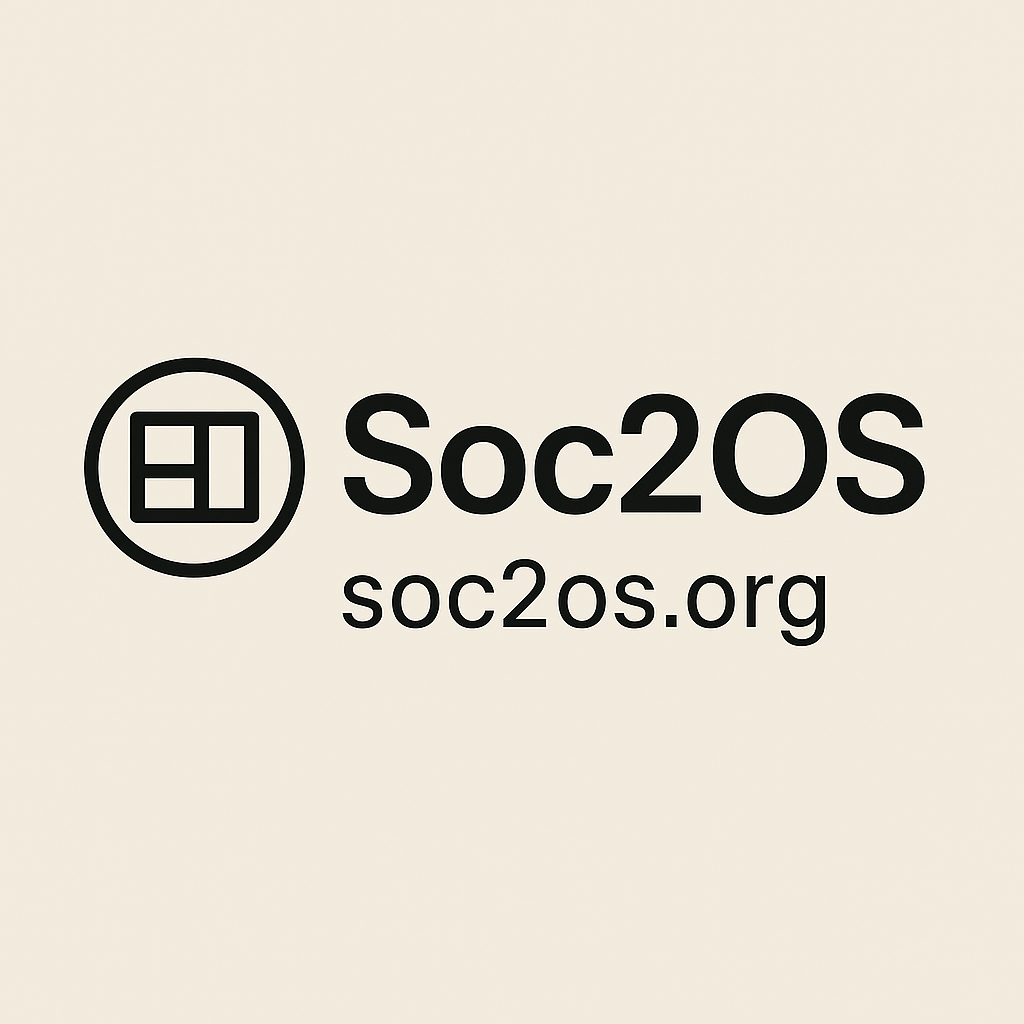
❤️ AI is breaking the employer-insurance model whether we like it or not. We can either:
- Plan ahead: Build a system that works when employment is unstable.
- React in crisis: Wait until millions lose coverage simultaneously and scramble for solutions.
The choice isn’t between the current system and Society 2.0. The choice is between Society 2.0 and chaos.
✨ In short: S2 health reform cuts bureaucracy, doubles access, halves cost, and integrates food + mental health into the core system. It’s AI-enabled, NP/PA-delivered, prevention-first, and dignity-anchored.
1. Universal Healthcare as a Public Utility
Healthcare is not a privilege — it’s a public utility, like clean water or electricity.
Everyone has guaranteed access, regardless of income, status, or employment.
2. AI-First Care Model
AI handles triage, routing, and imaging. Humans focus where it matters.
- AI triage → symptom assessment, routine conditions, imaging reads.
- Smart routing → nurse practitioners/physician assistants for simple cases, doctors for complex ones.
- Same-day access → urgent needs met within hours, not weeks.
3. Efficient, Human-Centered Delivery
- 70–80% of care by NPs/PAs; doctors focus on advanced procedures and diagnoses.
- Shorter, focused visits; longer consults only when necessary.
- Simple, transparent prices: $20–40 flat-rate telehealth for common issues, no bureaucracy.
4. Prevention and Outcomes, Not Volume
- Measure health outcomes, not visit counts.
- Aggressive preventive care + population health analytics.
- Transparent reporting on results vs. cost.
- Linked directly to Society 2.0 Scoreboard metrics (e.g., Zero Hunger Days, functional homelessness eliminated).
5. Cost Reset
- Slash waste: no executive bonuses, no gold-plated facilities.
- AI + NPs/PAs deliver at a fraction of current costs.
- Evidence from surgery centers/medical tourism shows real costs are often 70–80% lower than hospital charges.
- Net: better care at ~half today’s cost.
- No new taxes required — funded entirely by eliminating today’s waste and inflated pricing.
6. Mental Health Parity
Mental health valued alongside physical health.
Universal access to counseling, crisis care, and resilience-building.
Strong ties to community prevention (arts, volunteerism, music, and connection).
7. Addiction as Health, Not Crime
Substance abuse treated medically, never criminalized.
Integrated treatment + support services instead of jail time.
8. Food as Medicine
Nutrition integrated into healthcare prescriptions.
URMAP ensures no one goes hungry, reducing diet-related disease.
Food security = foundational health policy.
9. Equity and Dignity as Core Principles
No cages, no stigma, no gatekeeping.
Health is a baseline condition of dignity in Society 2.0.
Framing Strategies
🍰 Waste framing: Most U.S. health spending is not real care, but inflated billing and bureaucracy.
💰 Profit framing: Healthcare is a public good, not a profit engine.
🪜 Layered approach: Build broad coalitions on waste reduction, then reinforce deeper value shifts: dignity over profit.
Health Insurance in Society 2.0
Routine care is pay-as-you-go at transparent prices.
Insurance covers only catastrophic events — major surgery, cancer, long-term care.
This restores insurance to its true role: catastrophe protection, not paperwork for everyday life.
International Lessons
- Taiwan: AI-driven efficiency.
- Germany: social insurance stability.
- Singapore: health savings paired with safety nets.
Together: efficiency + fairness + empowerment.
Pharmaceuticals in Society 2.0 💊
Executive summary: Cheaper drugs, faster generics, cures prioritized over dependency.
Life-saving medications are public goods.
Prices tied to cost of production + fair margin.
Research rewarded with Earth Credits for genuine innovation, not rent-seeking.
Universal Mental Health Access Program (UMHAP)
Concept: Free, universal, stigma-free mental health care.
Delivery: Offered through pharmacies, cafés, libraries, and apps.
Benefits: Simple, casual, accessible everywhere. Preventive care saves billions downstream.
Innovations: integration with music, community colleges, and elder hubs to normalize mental health and strengthen communities.
Implementation Path (5–10 years)
- Years 0–2: Transparency, catastrophic-only insurance pilots, direct-pay primary care pilots.
- Years 2–5: Scale hospital global budgets, expand catastrophe coverage, shift routine care.
- Years 5–10: Retire bureaucracy, reinvest savings into clinician supply, prevention, and mental health parity.
Example: An insurance worker retrains into a local mental health coach — proving transitions can protect both dignity and livelihoods.
Success Metrics
- Access: time-to-appointment, NP/PA same-week coverage.
- Cost: per-capita spend, % household income on health.
- Outcomes: avoidable admissions, chronic condition control.
- Equity: gap closures by income/race/rurality.
- Satisfaction: patient and clinician NPS.
Aligned with Society 2.0 Scoreboard: Zero Hunger Days, elimination of functional homelessness, rising wellbeing.
Implementation Plan
1) Mass Organizing (movement engine)
Goal: A durable, distributed base that can turn online energy into offline pressure in days, not months.
Build
- Chapters → Regions → States: 10–20 pilot cities first. Each chapter has triad leads: Field, Partnerships, Narrative.
- Volunteer ladder: Join → Train (90-minute onramp) → Team role (weekly) → Captain (10–15 volunteers) → Chapter lead.
- 3 signature programs:
- Care Days (free NP/PA pop-up clinics + mental health pods + URMAP demos)
- Story Bank (insulin, surprise billing, wait time stories; consented, captioned, searchable)
- Community Teach-ins (S2 explainer nights at libraries/colleges; hand people one action on exit)
Tactics
- Relational organizing: Each volunteer recruits 3 named friends; track in a simple CRM.
- Issue “Sprints”: 10-day pushes tied to real votes (drug pricing, hospital budgets).
- Coalition anchors: unions (nurses/teachers), faith leaders, seniors groups, veterans, parent orgs.
KPIs
- Active volunteers per chapter; opt-in SMS list growth; doors knocked; commit-to-vote pledges; attendance at Care Days.
2) Electoral Strategy (win the venues that matter)
Goal: Win where policy can actually flip: states + a federal path.
Map the winnables
- State tranche A (ballot or strong exec authority): CO, WA, OR, AZ, MI, MN.
- State tranche B (pilot-friendly, rural hospital leverage): ME, VT, NM, PA, WI.
- Federal levers: drug pricing enlargement, site-neutral payments, hospital global-budget pilots, catastrophic-only standard.
Tactics
- Ballot measures (where viable): International reference pricing + hospital global budgets + NP/PA access floor.
- Targeted legislative flips: 15–25 districts per year where “lower drug prices + primary care now” polls >60%.
- Candidate pipeline: Train 100 local candidates (school board → county → state). Provide S2 Health “campaign in a box.”
Vehicles & compliance
- (c)(3): education & research; (c)(4): advocacy & pressure; PAC/Super PAC: independent expenditures.
- Fund state experiments while building the federal majority math. (Coordinate with counsel; keep walls clean.)
KPIs
- Seats won, ballot wins, roll-call votes moved, # of co-sponsors, policy planks adopted by major candidates.
3) Business Coalition-Building (split the incumbent bloc)
Goal: Peel off powerful winners under S2: employers, small biz, rural hospitals, clinicians, and tech.
Who benefits immediately
- Employers & small biz: premiums ↓, predictability ↑, admin burden ↓.
- Rural hospitals: global budgets = survival.
- Clinicians: fewer admin hours; scope-of-practice clarity; malpractice safe harbors.
- Tech & retail: UMHAP + telehealth foot traffic & brand lift.
Offer a “Grand Bargain”
- Keep private provision & patient choice; flip financing (catastrophe insurance + direct pay routine + negotiated drugs).
- Two-pocket simplicity for CFOs: Pocket 1 (everyday care, transparent prices/HSAs), Pocket 2 (catastrophes, universal cap).
Tactics
- Founding 50 Employers: publish an open letter + cost case study (3-yr TCO vs status quo).
- Rural Hospital Compact: 50 CEOs pledge support for global budgets for stability + access guarantees.
- Clinician Council: nurses/NPs/primary-care MDs as spokespeople (not just policy wonks).
KPIs
- employers signed; # hospital systems in compact; # clinician orgs endorsing; media hits featuring business voices.
4) Media Strategy (own the narrative, inoculate against scare ads)
Goal: Make “half the cost, twice the access” the sticky frame—and prove it with visible pilots.
Message
- Promise: “Same doctors, simpler system. Half the cost, twice the access.”
- Villain: Waste and price games, not “doctors/hospitals.”
- Proof: Pop-ups, price receipts, and human stories—not white papers alone.
Content system
- Weekly receipts: Side-by-side bills (US vs abroad; hospital charge vs surgery-center actual).
- 30-sec videos: A mom, a retiree, a small-biz owner; same CTA: “Join a Care Day near you.”
- Influencer arcs: RN TikTokers, finance/CFO creators, veteran advocates, faith leaders.
Press ops
- Care Days with local mayors, pastors, and CEOs; give reporters patient stories + hard savings.
- Report card drops each quarter (access times, drug prices, ER diversions) with plain visuals.
Counter-disinfo
- Rapid-response cell (24/7): debunk fear ads within hours; reuse templated “myth → fact” cards.
- Pre-bunking: “You’ll hear ‘government takeover.’ Here’s the truth: private care stays; we cut billing games.”
KPIs
- Favorability of core frame; message recall; share of voice; conversion from content to event signups.
5) Rapid Implementation Once Power Is Achieved (hit the ground running)
Goal: Convert wins to policy in 100 days so opposition can’t slow-roll.
Day-1 Package (pre-written)
- Statute bundle: drug price transparency + “lowest OECD price” reference rule; site-neutral payments; NP/PA same-week access floor; global-budget pilots; catastrophe standard benefits.
- Executive actions: price dashboards; HTA (Health Transition Authority) stood up; waiver requests queued (e.g., 1115/1332) to align federal funds—jurisdiction-specific.
- Budget memo: pays-for from admin waste clawback, drug convergence, fraud reduction, site neutrality.
HTA playbook
- Jobs glide path: wage insurance + reskilling for admin workers; hiring quotas tied to global budgets.
- Stability guardrails: rural hospital compacts; conversion grants (inpatient → urgent care/mental-health chairs).
- Quarterly Scoreboard: access times, per-capita spend, outcomes, equity gaps, satisfaction.
Pilot to scale
- Start 5–10 Model Regions (urban/suburban/rural). Publish 90-day wins: access time ↓, ER diversions ↑, drug spend ↓.
- Lock in via auto-expansion triggers (e.g., if targets met two quarters in a row, program scales to neighboring counties).
KPIs
- 100-day enactments; time-to-access change; drug spend delta; ER visits avoided; hospital financial stability; public satisfaction.
Opposition Map & How We Neutralize It
- Pharma/PBMs: pre-empt with reference pricing + transparency; highlight taxpayer-funded R&D; use business & veteran spokespeople.
- Hospital chains: offer global budgets + capital modernization; frame site neutrality as “same price, same service.”
- Insurers: pivot staff into care navigation/quality auditing; de-risk with wage insurance + reskilling.
- Ideological attack lines: pre-bunk (“private care remains”), emphasize patient choice + simplicity.
24-Month Roadmap (condensed)
Quarter 1–2: Pick 12 pilot metros; launch 50 chapters; first 3 Care Days; founding employers letter; baseline media tracker.
Quarter 3–4: First state bill(s) and/or ballot filing; rural hospital compact; candidate cohort #1; national story bank to 1,000 entries.
Quarter 5–6: Win 1–2 state policies (drug pricing/ref pricing + global budgets pilot); publish first Scoreboard; expand to 30 metros.
Quarter 7–8: Second wave states; 100-day kits finalized; double down on winning message; federal co-sponsor growth.
Power Scoreboard (measure the movement, not just the policy)
- People Power: active volunteers, trained captains, unique callers/door-knockers.
- Policy Power: bills filed/passed, ballot wins, exec actions issued.
- Narrative Power: share of voice, favorability of core frame, myth rejection rate.
- Economic Power: employers signed, hospitals compacted, clinician orgs endorsing.
- Delivery Power: access time ↓, ER diversions ↑, drug price delta ↓, satisfaction ↑.
One-pager you can say anywhere
Half the cost. Twice the access. Same doctors.
We keep private care and patient choice, cut billing games, and guarantee NP/PA same-week access. Drugs are priced at or below the lowest advanced-nation price. Rural hospitals get stable budgets; admin workers get paid transitions. We prove it with local pilots, then scale. Join a Care Day, share your story, and help pass the state bill.
Society 2.0 Reframe
Healthcare = public utility.
AI amplifies care delivery, not billing games.
Prevention and wellbeing prioritized.
Entire “cake layers” of profit-driven bureaucracy retired as technical debt.
In Society 2.0, healthcare is no longer an industry—it is a human right, delivered simply, fairly, and with dignity.
Previous: From Box Store to Neighborhood
Next: Healing Villages

Leave a Reply